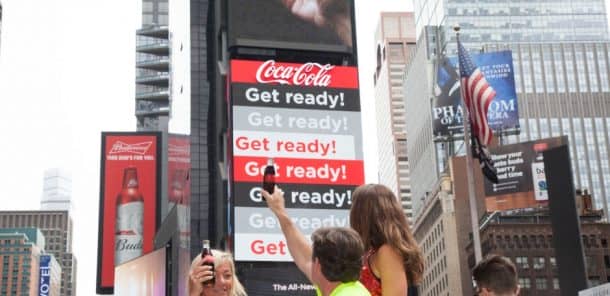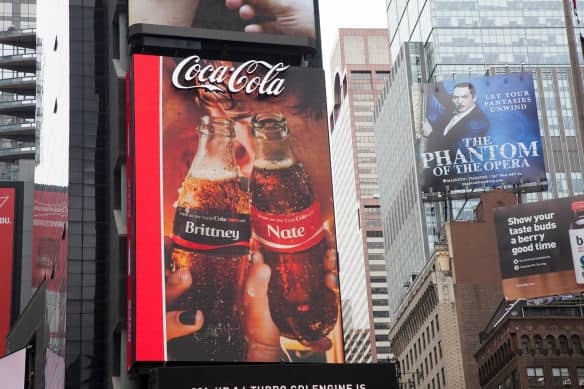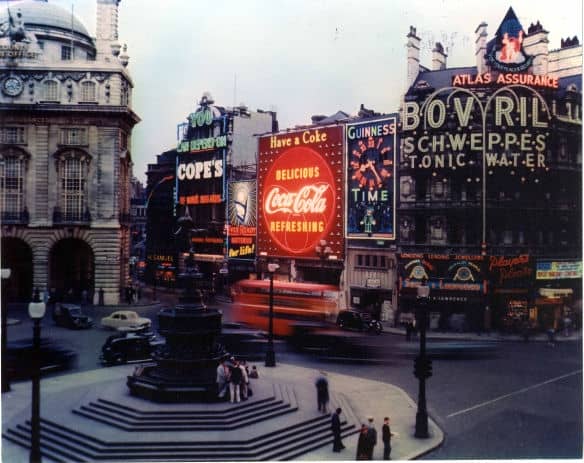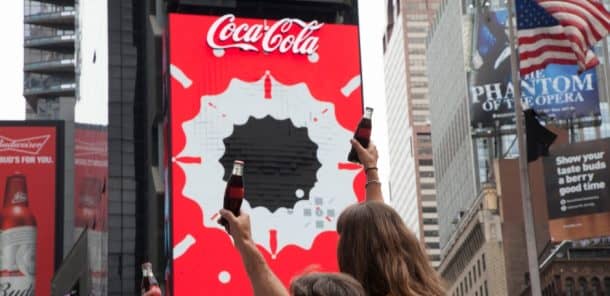Advertisement industry has had its fair share of technological advancements. In the past few years, we have moved on from the plain old billboards to interactive boards that cough to stop people from smoking or clean the air or produce drinkable water. Coca-Cola remains on the top, introducing a robotic billboard in the place referred to as Crossroads of the World, New York City’s Times Square.

Guinness World Records calls the Coca-Cola design world’s first 3D robotic sign that spans six stories and the company’s website says it contains “1,760 independently moving LED screens, choreographed to the content on display – creating a multisensory experience for the 300,000 people who pass through the busy Manhattan intersection each day.”
A Coca-Cola has been standing in the middle of Times Square for nearly 100 years, and it never got a major upgrade until 2004 when Coca-Cola replaced it with a digital version to celebrate 100th Anniversary of the landmark. Now 13 years later, there is a bigger and amazing change that has many people talking about it.

The 3D robotic sign measuring 68ft x 42ft has been tested for all weather conditions, so the high-resolution LED cubes do not malfunction in any situation. A total of 1,715 moving and 245 static cubes make up the billboard and extend to and retract from the audience for the best visual experience. The visual display spans over an area of 240.23 square meters and each of the cubes extends to 1.52 meters.

The sign is fully operation 24/7 and displays lots of advertisements for products including Coca-Cola, Coca-Cola Zero sugar, Diet Coke, and Coca-Cola Life. Kim Gnatt, group director Business Strategy, Coca-Cola North America said in a statement on the website, “From the beginning, our brief was to create a pause-and-refresh moment in the crowded environment of Times Square.”

The sign will correspond with the times of the day and customize the content for its audience, including the daily commuters and tourists.

First installed in the Times Square in 1920, the board became of the first neon signs ever. Over the decades the sign changes profusely as did the products, and any movie that features a scene in the metropolitan landmark has featured some version of the sign. The sign transformed into a tech one in 2004 with the 3D sign with 900,000 pixels, 32 sculpted screens, backed by 57 bits of processing.
As technology grows, we expect something exceptional to happen to this sign, which will keep the spectators in awe.


